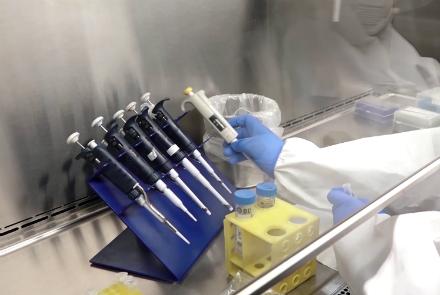Fighting the Covid-19 pandemic is not a 100-meter sprint; rather, it is a marathon. With Moderna and Pfizer’s early results, Covid-19 vaccines will likely become available at the end of this year or early in 2021, countries are preparing for at least another year of transition into a new normal. This transition will not be smooth. Countries will struggle to protect their populations first, and global partnerships will be required to reignite the global economy.
Afghanistan has a number of tasks it must complete to return to global society and specifically to the global economy: 1) Prepare to access vaccines, 2) identify priority populations who should receive the vaccines, 3) set up permanent and mobile infrastructure for delivery and administration, 4) train and prepare the human resources staff such as the vaccinators, and 5) establish an information system for the vaccine.
Covid-19 situation in Afghanistan
As of November 19, 2020, Afghanistan has recorded 44,177 cases of Covid-19, conducted 134,314 tests (positivity rate of 33.5%), and lost 1,650 people. A national survey conducted in July 2020 found that 31% of the population had contracted the disease.
A majority of registered cases (53%) come from two highly urban provinces: Kabul and Herat, which together comprise 23% of the population of Afghanistan. The detection of Covid-19 cases is a function of testing, and the low number of cases in rural Afghanistan is due to the poor attention paid to rural populations. Confirming the focus on urban regions, the national survey found that the Kabul region had a 53% contraction rate, while the Central Highlands region had a 21% contraction rate.
It has been proven that age is a major factor in the severity and mortality of the disease. Older members of the population are more likely to get the disease, they are more likely to experience severe and critical conditions, and they die more.
Those with underlying medical conditions such as cardiovascular diseases, diabetes, obesity, and lung diseases are at a higher risk of infection and critical illness.
Frontline health workers are at a particularly high risk of infection.
In terms of gender distribution, daily testing showed a 30% female detection rate and 70% male detection rate. The national survey corrected the misperception that women were infected at a lower rate. The survey found that 53% of women had contracted the disease compared to 47% of men, revealing the poor attention to women in national testing.
The Vaccines
There are now at least 52 vaccines at various stages of human trial. Many companies are in the last (Phase 3 of human trials) of vaccine development including Moderna, Pfizer/BioNTech, Johnson & Johnson, Oxford/Astrazenca, Novavax, SinoVac, Wuhan Institute, SinoPharm, and Bharat BioTech. Volunteers are participating in phase 3 of the trial in countries across the world including Argentina, Brazil, China, Germany, India, Israel, Russia, Pakistan, Saudi Arabia, South Africa, UAE, the UK, and the USA.
Russia (Gamaleya Research Institute) and China (CanSinoBio) have approved vaccines for limited use without waiting for the results of the last stage (Phase 3) of the trials. Their approvals are considered rushed and dangerous.
We have some interim results from two vaccines. Pfizer/BioNTech’s Covid-19 vaccine reported 90% efficacy, and Moderna’s reported 95% efficacy on November 16, 2020. Pfizer’s vaccine requires ultra-cold freezer, while Moderna’s vaccines requires normal freezers. These are extremely promising results for a world beyond Covid-19, but countries have to prepare to acquire, deliver, and administer them.
Afghanistan has a number of ways to gain early access to vaccines. Vaccine approval is a national undertaking. Afghanistan can approve vaccines in the latest stage for limited use (health workers or the army). Another feasible option is to participate in phase 3 of human trials through an agreement with one of the leading companies and agree to buy at a lower price (if and once the candidate vaccine is proved safe and effective). Afghanistan needs a robust research team to be able to participate in the human trials of potential vaccines. The last option is to wait for UN health agencies and/or global aid agencies to donate vaccines to Afghanistan.
While preparing to access vaccines early, Afghanistan has to develop a strategy to prioritize the populations who would need vaccines the most. Older adults, people with underlying conditions, and health workers are considered the priority populations for vaccines in the rest of the world. Younger populations may get vaccines later.
Pfizer’s vaccine requires the individual to receive two dosages within two weeks of each other. The vaccines will need to be kept in cold freezers. Afghanistan also needs to set up infrastructure such as clinics with cold chains and vehicles with freezer boxes to deliver vaccines to people. Training human health resources to administer vaccines and manage the potential side effects requires extensive planning and logistics.
Finally, a digital information system needs to be set up to record and track procurement, delivery, and administration. A system with no (or inappropriate) information management is blind.
The quicker and the more effectively that Afghanistan can deliver the vaccines to its population, the easier it will be for other countries to open their borders to Afghanistan. If Afghanistan lags in vaccine procurement, delivery and administration, it will experience harmful impacts to its economy for another year – impacts that might take years to recover from, if it recovers at all.
Maisam Najafizada, PhD, is Assistant Professor of Public Health Policy at Memorial University of Newfoundland, Canada.
The views expressed in the opinion pieces are not endorsed or necessarily shared by TOLOnews.
Contributors are responsible for the accuracy of the information in an opinion piece, but if it is discovered that information is not factual, a correction will be added and noted.


